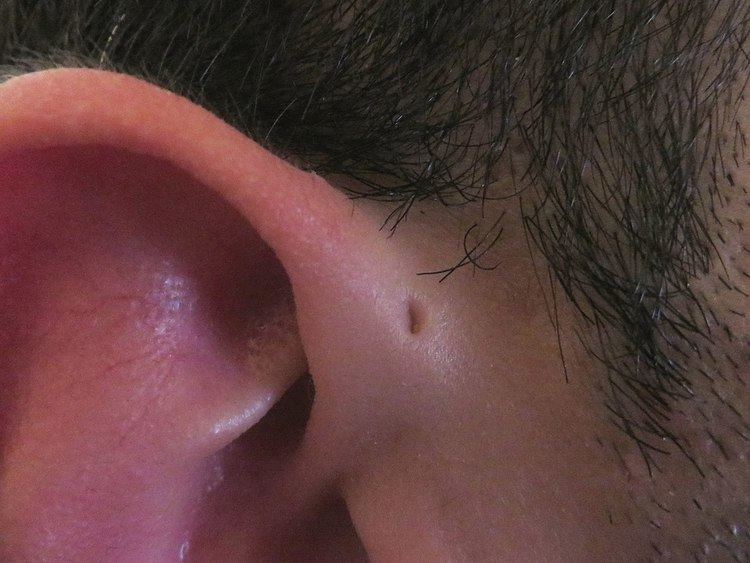Specialty otolaryngology ICD-9-CM 744.4 MedlinePlus 003304 | ICD-10 Q18.1 DiseasesDB 34576 | |
 | ||
A preauricular sinus (also known as a congenital auricular fistula, a congenital preauricular fistula, a Geswein hole, an ear pit, or a preauricular cyst) is a common congenital malformation characterized by a nodule, dent or dimple located anywhere adjacent to the external ear. Frequency of preauricular sinus differs depending the population: 0.1-0.9% in the US, 0.9% in the UK, and 4-10% in Asia and parts of Africa. Comparative frequency is known to be higher in Africans and Asians than in Caucasians.
Contents
Preauricular sinuses are inherited features, and most often appear unilaterally. They are present bilaterally in 25 to 50% of cases.
Causes
Preauricular sinuses and cysts result from developmental defects of the first and second pharyngeal arches. This and other congenital ear malformations are sometimes associated with renal anomalies. They may be present in Beckwith–Wiedemann syndrome, and in rare cases, they may be associated with branchio-oto-renal syndrome.
Complications
Occasionally a preauricular sinus or cyst can become infected.
Most preauricular sinuses are asymptomatic, and remain untreated unless they become infected too often. Preauricular sinuses can be excised with surgery which, because of their close proximity to the facial nerve, is performed by an appropriately trained, experienced surgeon (e.g. a specialist General Surgeon, a Plastic Surgeon, an otolaryngologist (Ear, Nose, Throat surgeon) or a Head and Neck specialist).
Treatment
Courses of treatment typically include the following:
